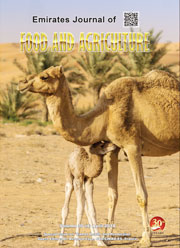COMPARISON OF DAIRY PERFORMANCES BETWEEN DROMEDARIES, BACTRIAN AND CROSSBRED CAMELS IN THE CONDITIONS OF SOUTH KAZAKHSTAN
DOI:
https://doi.org/10.9755/ejfa.v26i4.17271Keywords:
Milk yield, Composition, Camel species, KazakhstanAbstract
The aims of the work compare similarly the yield and the composition. In this work determined the Camel milk composition (fat content, dry matter, density) and milk yield of Dromedaries, Bactrians and Hybrids in SouthKazakhstan condition in same farm, same time and repeated same animals. The milk sampled of 20 camel's milk, where 6 Bactrians (B), 5 dromedaries (D), 2 hybrids F1 Iner (I), 4 hybrids F1` Nar (N), and finally 3 hybrids F2 Kospak (K) with repeated 3 times (days). The milk of Bactrian camels contained significantly more DM and the same tendency was noted for the fat content. In the same time, the milk yield tended to be lower even if no signification threshold was reached. Contrarily, the milk of dromedaries was not so rich in absence of any significant difference to F1 and F2 hybrids except an increased density. F1 hybrids (Nar-maya and Inermaya) had a slight but not significant tendency of increased milk yield but a more or less reduced contents and density. This difference seems to be extenuated for F2 (Kospak) animals. The effect of calving year was illustrated by significantly lower milk yields in the second year of lactation (3.8 versus 2.8 L/d, P<0.05), slightly increased contents of fat (4.9 versus 4.2 g/L, P<0.10) and Dry matter (14.0 and 13.8 g/L, NS) and also density (1030.0 versus 1032.3 g/L).










 .
. 